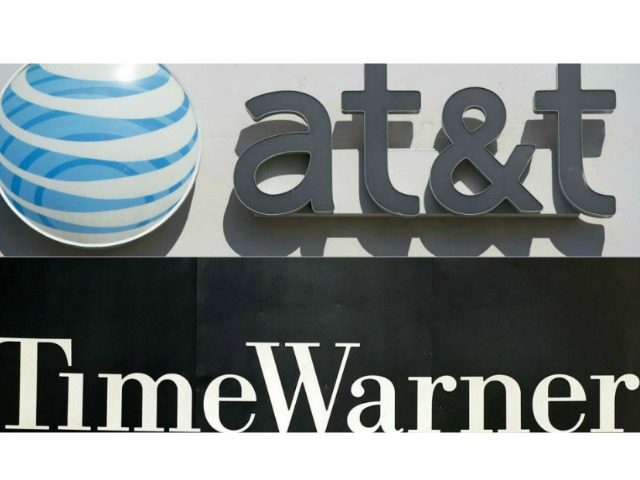The year 2016 will go down as the Revolt-of-the-Masses. Whether one was Feeling-the-Bern or Trumping-the-GOP, Americans believe that many aspects of our society have been designed so that they are on the short end of the financial leash.
A microcosm of this is the fleecing of cable/satellite (pay-TV) consumers by the Big Media/Cable Cabal in having channels forced on them that they do not watch resulting in overcharges of tens of billions of dollars per year. The Cabal is comprised of content/programmers such as Disney/ESPN and Time Warner, and pay-TV providers such as Comcast and AT&T/DirecTV. This represents a massive redistribution of wealth from working Americans to the 1/10th of 1 percent, billionaire Big Media moguls.
A solution to this is called “a la carte” cable – or CableChoice – a simple concept in which consumers pay for only the channels they want. Surveys have shown that nearly half of consumers would prefer a la carte channels. Imagine when going to a restaurant that you are forced to buy multiple side dishes and a beverage with your prime rib. I know of no other industry in which a consumer has to pay for products he does not want in order to get the products he does want.
Let’s itemize the theft the Cabal has waged on working Americans. The average cable bill is roughly $50/month, excluding Internet, premium channels, and miscellaneous items. But what value are consumers getting in terms of the actual channels that they watch?
The consumer views only 18 of the 189 channels available on the average cable system, according to Nielsen, the TV/Cable ratings firm. These 18 channels cost about $20/month wholesale, so adding a 20% markup the cost to consumers is $24/month; hence, the consumer could save $26/month – $312/year – if he paid only for the channels that he wanted. Multiplying $312 x 99 million (current number of pay-TV subscribers) = $30.9 billion/year that is fraudulently redistributed from cash-strapped, working/middle-class Americans to billionaire moguls, the vast majority of whom are liberal to leftwing.
The worst culprit is the sports programming racket – by far the most expensive content. ESPN is the chief culprit as it gouges consumers by $7.21/month as of 2014. Notably, the next highest-priced channel is TNT at $1.48/month. Add ESPN 2 (90 cents/month) and the total cost of the ESPN Empire is $8.11/month – a whopping 16% of the average cable bill.
Moreover, there are about 50 million female cable-subscriber head-of-households (HOH), and surveys have shown that overall they would not select ESPN if they had a choice. And if half of all cable subscribers could drop ESPN, as the data show they would, 75% of women would do so. So this affects particularly female HOH, who throw away $97/year being forced to pay for ESPN. If ¾ of these discarded ESPN – 37.5 million – this would represent an enormous $3.64 billion per year hemorrhage from its bottom line, or 1/3 of ESPN’s total revenue of $10.8 billion in 2014.
So what is to be done? Here are some solutions:
- Prohibit wholesale bundling under the antitrust laws, i.e., stop programmers from illegally tying unpopular channels to must-have networks;
- Mandate CableChoice so that consumers get to select the channels they want;
- Require access to the set-top box by non-traditional, online distributors – “over-the-top” (OTT) services such as Netflix; and
- Break up the Big Media/Cable Cabal marriage by divorcing content from distribution, i.e., prohibit the Time Warners from owning the pipes/cable systems and the AT&T/DirecTVs from owning the content. Right on cue, the proposed marriage of AT&T and Time Warner should be blocked.
A model for the divorce of the content-carrier Cabal marriage is that in the late 1940s the federal government forced the movie studios to sell their theater chains, viewing this rightfully as an anti-competitive, restraint-of-trade conflict that did not serve the public interest by fostering competition (United States v. Paramount Pictures). Hence, for example, Comcast would be forced to sell CNBC, NBC, the NBC Sports Network, etc.
Politically, this could be a winning issue for Trump. A President Trump could: 1) get his Justice Dept. to investigate the anti-competitive practices committed by the Cabal and break it up; 2) fine the Cabal billions for its legal/regulatory violations; 3) use the bully-pulpit to expose this theft from Americans by billionaire Cabal moguls; and 4) craft legislation to mandate CableChoice and other solutions.
Furthermore, Trump could target women voters with the following: “Do you like paying over $300/year in unnecessary payments to cable billionaires for channels you don’t want?” “Would you like to stop being forced to pay $100 per year for ESPN alone, when you don’t watch it?”
A goal of economic public policy should be to foster innovation, competition, and investment. In the pay-TV world this requires a level playing field, transparency, open access to the pipes/programming, and enforcement of the antitrust laws. A President Trump could accomplish this because he is not beholden to Cabal special interests as are conventional politicians.
Robert Brantley is a policy consultant and former FCC attorney.

COMMENTS
Please let us know if you're having issues with commenting.